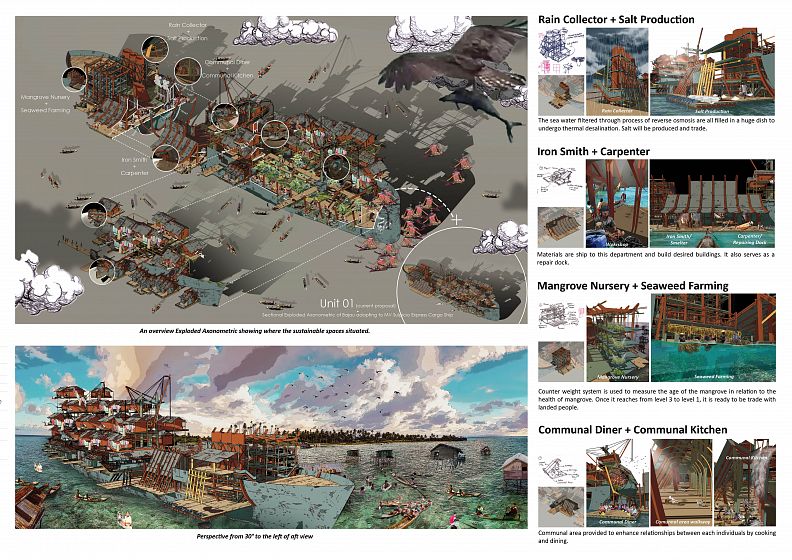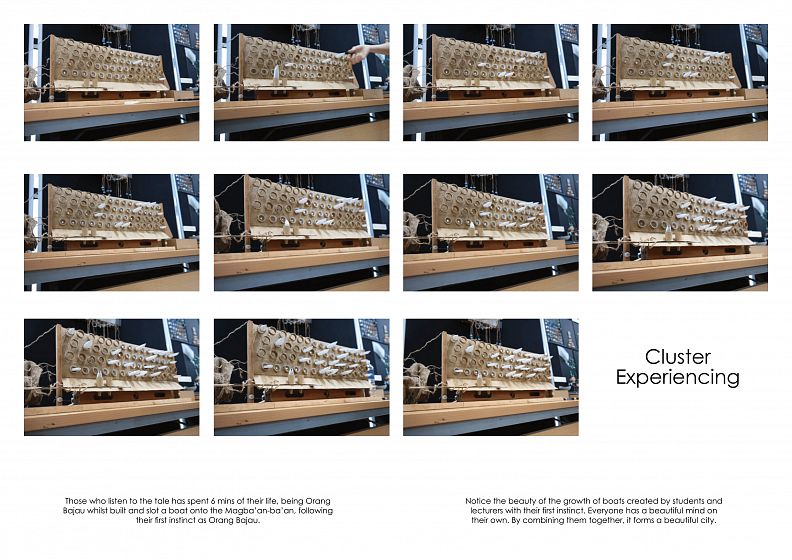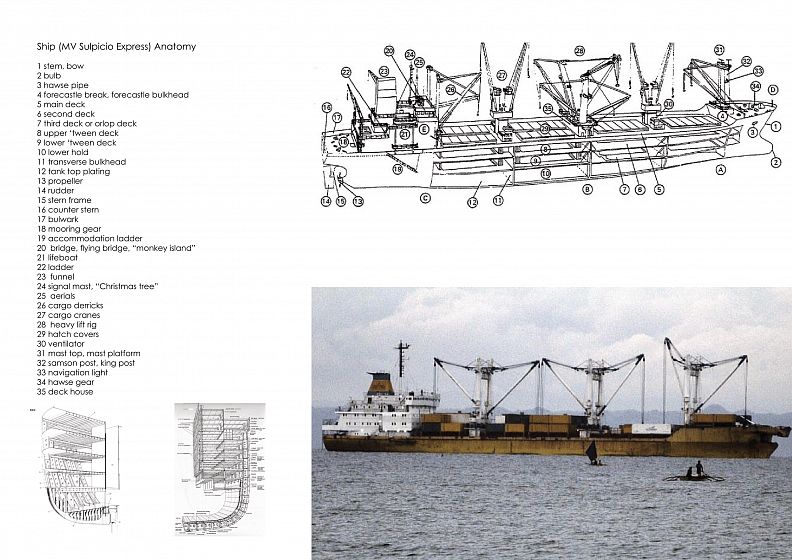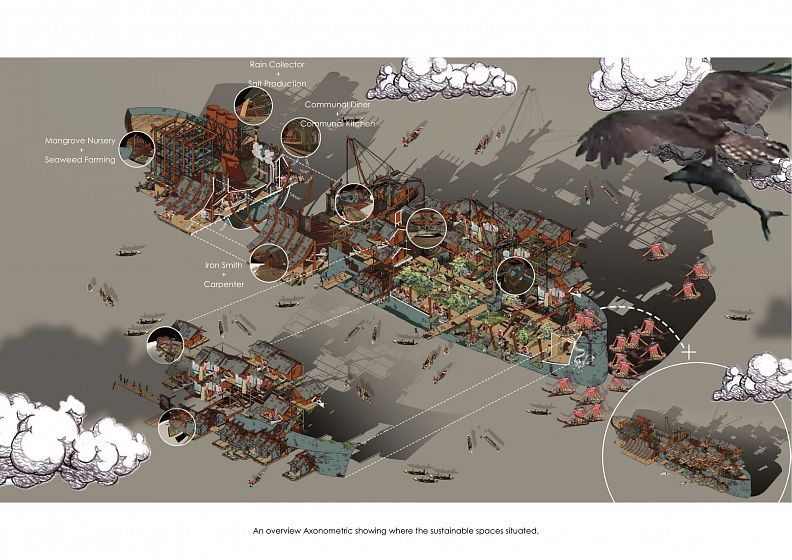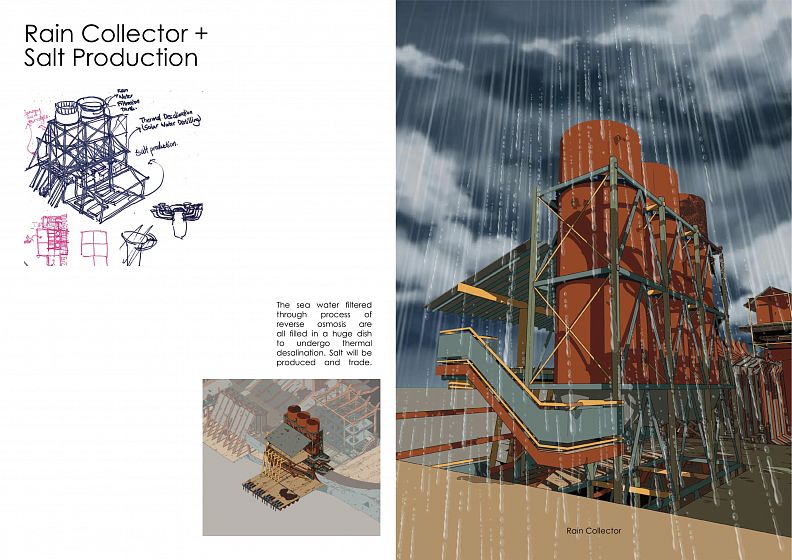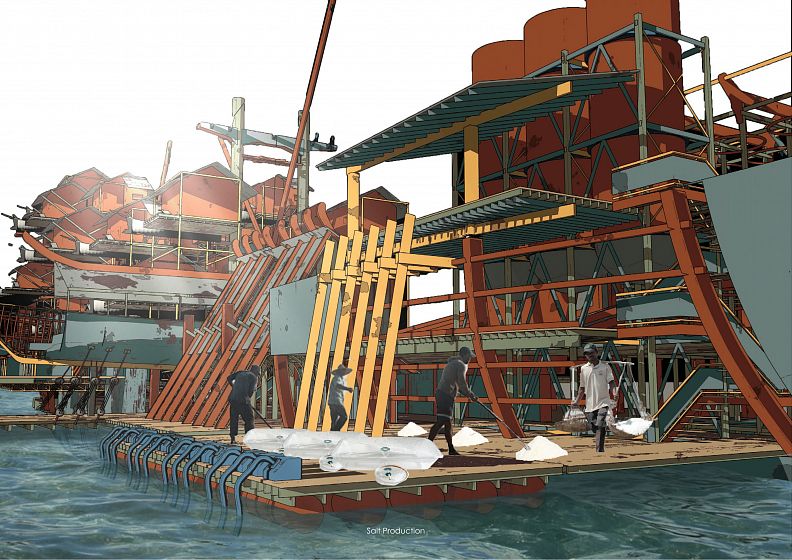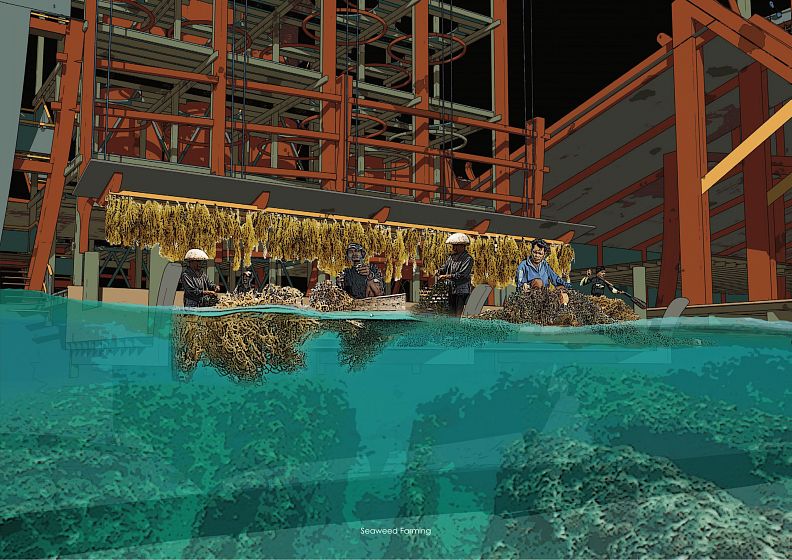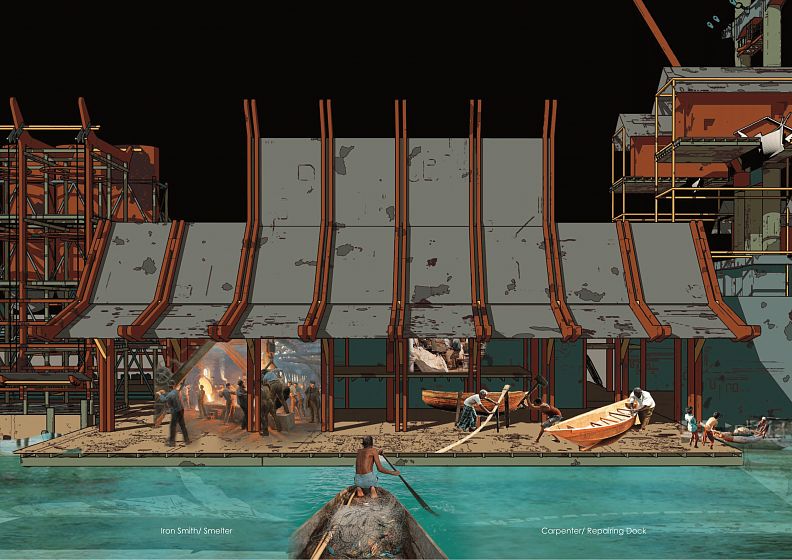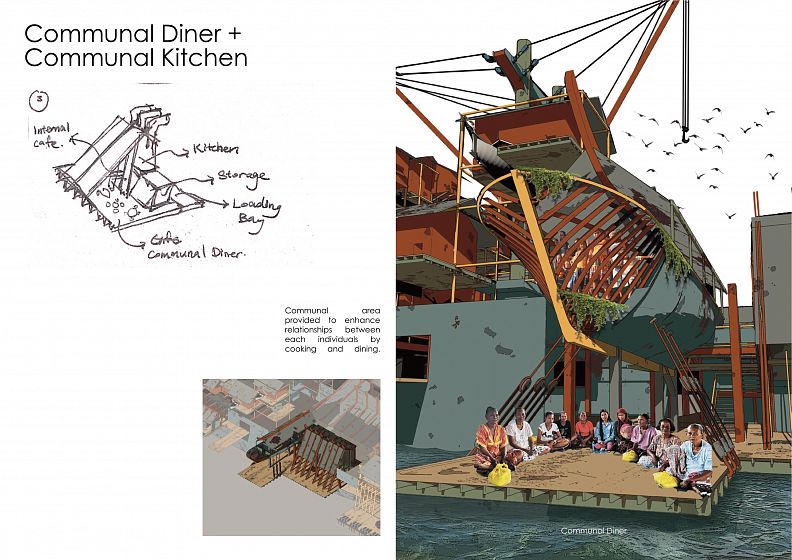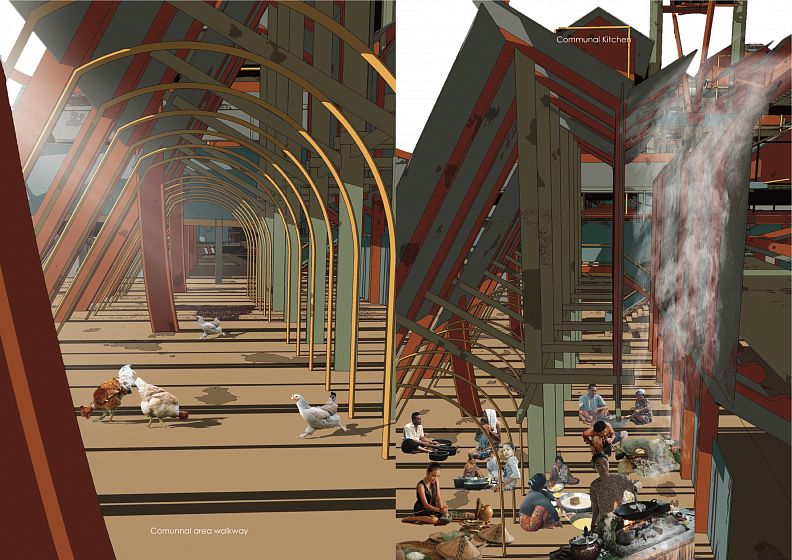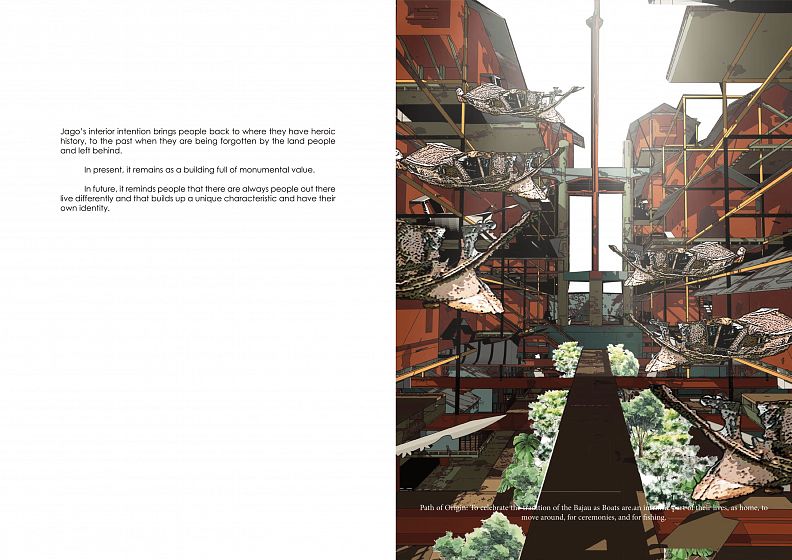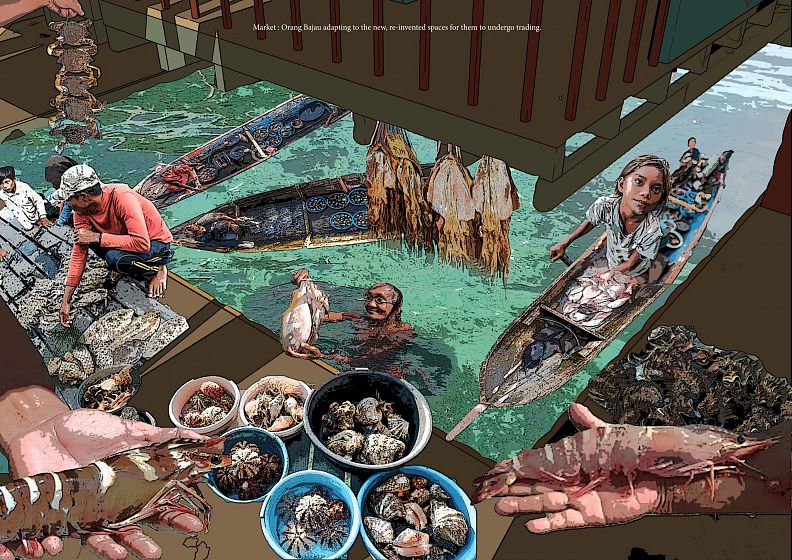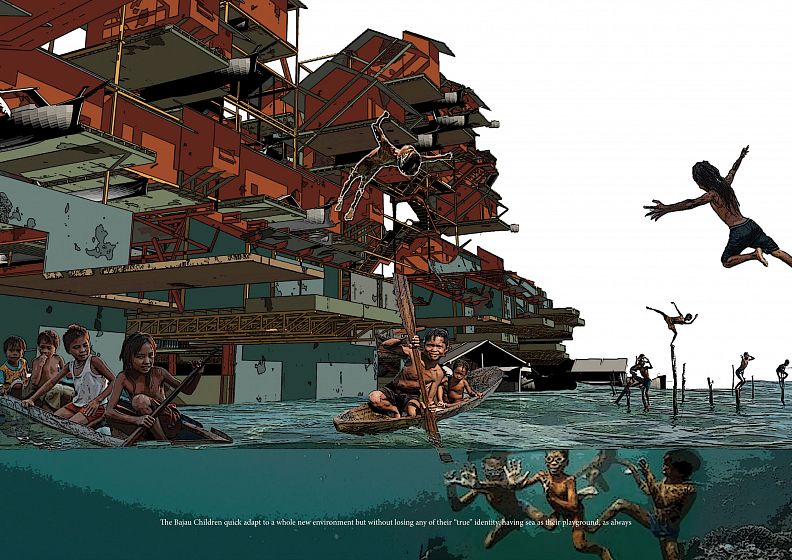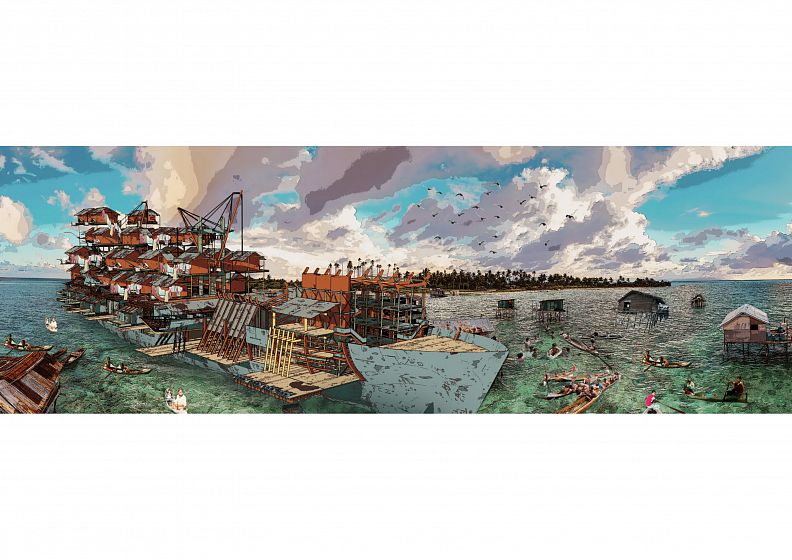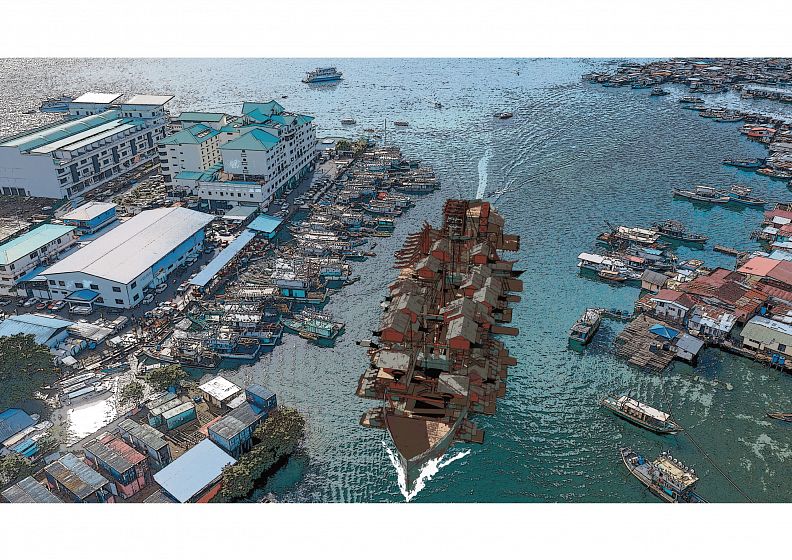Autonomous City - The Tales of Borneo

Project idea
This project questions, “What if the stateless Bajau people found a way to create their own kingdom?”
Instead of solving statelessness issues, this project is designed to allow stateless Bajau people free from the restriction of the Sabah Government, creating their own city of autonomy remaining their traditions with them. It is designed to countervail centrifugal tendencies, collecting those dispersed in the first place when there was a war in Philippines.
This project mainly focuses on the stateless people living on the sea at Semporna, Sabah in East Malaysia.
Project description
A study was made by reviewing several articles to unfold the original story of the Bajau. The informations are then being transferred into Artwork with creative writing that portrays the knowledge of the Bajau people gained throughout their entire life being sea gypsies who lived in the underwater of Semporna, Malaysia.
Every story has its own characteristic, in this case, the Bajau people encounter many problems which may have been one of their daily routine as a problem solver. Unfortunately, the problems would never be solved, in fact, 'they' become part of their lives. ‘Problem-solving’ alone is no longer the way they want. Therefore, they have to find an alternative, to be able to search for what they have lost long ago.
The Sabah government restrict the Bajau people from having nomadic lifestyle. They felt as though they are being kept in a huge invisible bubble, implementing a static architecture instead of nomadic one. Nomad is a term of condescension in the eye of the Bajau people. They are the vagabond that wanders from place to place. How do they escape from this sedentary lifestyle, and proceed to their indigenous way of life, perceived to accentuate freedom and a feeling of unique identity.
The Bajau people depend solely on rainwater for their daily supply. They even get resources from the land but the strict law of the land people created a ‘barrier’ that stops the Bajau people from coming ashore. They have no choice but to survive by themselves mainly by fishing. They are generically designed to fish underwater about 30 meters deep with high water pressure.
They also possess a strong spiritual believe. Even when they are planning to go out to the sea, they can predict the safety of the ocean by the spirit of the moon. The moon tells about what type of fish they can expect at certain timing in a month or even in a day.
They identified themselves as ‘band’. They regularly moored together at the anchorage sites tying their boats in tandems. This is called pamunda. With the identity of placelessness and displacedness, the Bajau people are not averse to accepting outsiders(from other culture) into their community.
With myself being in the perspective of Bajau people, a design was proposed integrating both the architecture and maritime architecture(vessel), brings together Bajau’s unique waterway and transient community and industry, in a collaboration scheme of co-creation and resourcefulness. This creates a new type of subtopian architecture that repairs, trades and congregates. It also provide a space of accumulative interaction for the Bajau people in a huge scale of nomadism.
Jago, the master of sea, plays a role as the main character of this narrative to allow possibilities to the questions of this project.
Technical information
The Bajau community is a highly adaptable community in given location and weather. This proposed architecture will slowly evolve into a city of bricolage, a dystopian where slums are formed onto the vessels like barnacles, covering most parts but utilizing the structure of the vessels, creating a reminiscent of the Bajau, a buoyant mansion dilapidated, breaking the time limbo, reminding the age of the Bajau people.




